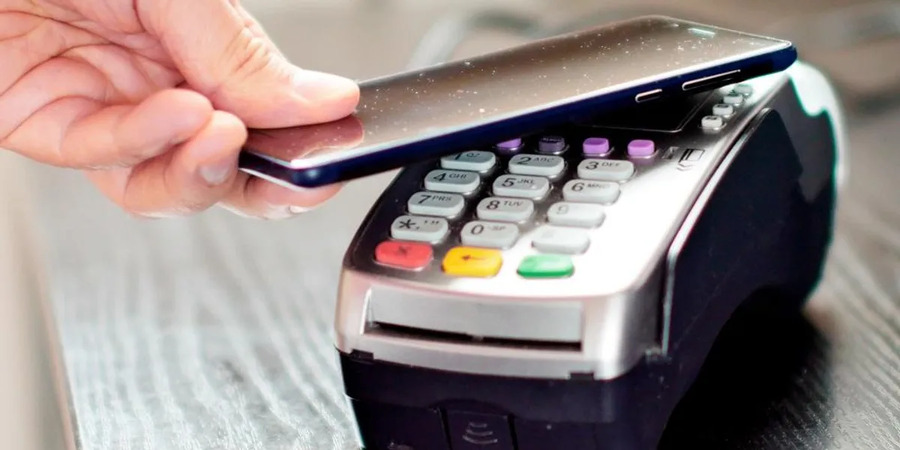
The Impact of Blockchain on the Mobile Payment Industry
Blockchain technology has emerged as a transformative force, revolutionizing various industries and reshaping the way we conduct transactions. One sector that stands to benefit significantly from this innovation is the mobile payment industry. In this article, we will explore the impact of blockchain on the mobile payment ecosystem, its benefits, challenges, real-world applications, and the future prospects of this technology.
Introduction to the Mobile Payment Industry
The mobile payment industry has witnessed exponential growth over the past decade, driven by the proliferation of smartphones and the increasing demand for convenient and secure payment methods. With the rise of digital wallets, mobile apps, and contactless payments, consumers are embracing the convenience of making transactions with just a few taps on their mobile devices. However, as the industry continues to evolve, certain challenges persist, including security vulnerabilities, high transaction costs, and a lack of transparency.
Understanding Blockchain Technology
What is Blockchain?
Blockchain is a decentralized, distributed ledger technology that allows for secure and transparent transactions without the need for intermediaries. At its core, a blockchain consists of a chain of blocks, where each block contains a list of transactions. These transactions are verified and added to the block through a consensus mechanism, ensuring the integrity and immutability of the data.
How Does Blockchain Work?
Blockchain operates on a peer-to-peer network, where multiple participants, known as nodes, work together to maintain the ledger. When a transaction is initiated, it is broadcasted to the network, and the nodes validate the transaction using predefined consensus algorithms. Once validated, the transaction is added to a block and linked to the previous block in the chain, creating a chronological record of all transactions.
Benefits of Blockchain in the Mobile Payment Industry

The integration of blockchain technology into the mobile payment industry brings forth several advantages that address the existing pain points and enhance the overall user experience.
- Enhanced Security and Fraud Prevention: Security is paramount in the mobile payment industry, given the sensitive nature of financial transactions. This technology offers a high level of security by design. The decentralized nature of the blockchain makes it inherently resistant to hacking attempts, as there is no single point of failure. Additionally, the use of cryptographic techniques ensures the integrity and confidentiality of the transactions, making it extremely difficult for unauthorized access or tampering.
- Improved Transparency and Traceability: Transparency is a critical factor in building trust between consumers and payment providers. This technology offers a transparent and immutable record of transactions. Each transaction recorded on the blockchain is visible to all participants in the network, providing a comprehensive audit trail. This transparency not only reduces the risk of fraudulent activities but also enables users to verify the authenticity of transactions, fostering trust in the mobile payment ecosystem.
- Faster and More Efficient Transactions: Traditional payment systems often suffer from lengthy settlement times, especially for cross-border transactions. This technology eliminates the need for intermediaries and streamlines the transaction process. By removing the reliance on centralized clearinghouses and financial institutions, blockchain enables peer-to-peer transactions that can be executed in near real-time. This efficiency not only improves the overall user experience but also opens up new possibilities for instant payments and microtransactions.
- Lower Transaction Costs: Transaction fees associated with traditional payment systems can be significant, particularly for cross-border transfers. This technology has the potential to significantly reduce transaction costs by eliminating intermediaries and unnecessary fees. By enabling direct peer-to-peer transactions, blockchain minimizes the need for intermediaries, resulting in lower transaction fees and greater financial inclusion, especially for individuals in underserved regions.
Challenges and Limitations of Blockchain in Mobile Payments
While blockchain technology holds great promise for the mobile payment industry, there are certain challenges and limitations that need to be addressed.
- Scalability Issues: One of the primary concerns with blockchain is scalability. As the number of transactions increases, the network can become congested, leading to slower transaction times and higher costs. Scaling solutions such as off-chain transactions and layer-two protocols are being developed to address this challenge. These solutions aim to increase the transaction capacity of blockchain networks without compromising security or decentralization.
- Regulatory Concerns: This technology operates across borders, making it subject to varying regulatory frameworks. The lack of standardized regulations poses a challenge for widespread adoption in the mobile payment industry. Governments and regulatory bodies are working to establish clear guidelines and frameworks to ensure compliance, consumer protection, and anti-money laundering measures. Overcoming these regulatory hurdles is crucial for the full integration of blockchain in the mobile payment ecosystem.
- Integration Complexities: Integrating this technology into existing mobile payment systems can be complex and require substantial changes to infrastructure and processes. Legacy systems often lack the compatibility and interoperability needed to incorporate it seamlessly. Additionally, organizations must ensure data privacy and security during the integration process. Collaborative efforts between technology providers, financial institutions, and businesses are essential to overcoming these integration complexities.
Real-World Applications of Blockchain in Mobile Payments
Blockchain technology has already found practical applications in the mobile payment industry. Let’s explore some of the use cases:
- Cross-Border Transactions: Cross-border transactions are often associated with high fees, lengthy settlement times, and lack of transparency. Blockchain-based solutions offer a more efficient and cost-effective alternative. By utilizing it, cross-border transactions can be executed directly between parties, reducing costs and settlement times while providing transparent and traceable records.
- Micropayments and Peer-to-Peer Transfers: It enables seamless micropayments and peer-to-peer transfers, revolutionizing the way individuals exchange value. With low transaction fees and real-time settlement, blockchain-powered mobile payment apps allow users to send and receive small amounts of money instantly, enabling new business models and empowering individuals in developing economies.
- Loyalty Programs and Rewards Systems: Blockchain-based loyalty programs and rewards systems offer enhanced security and transparency. By utilizing smart contracts, these programs can automate reward distribution, ensuring fair and tamper-proof distribution of loyalty points or tokens. Users can easily track their rewards, redeem them, and transfer them to others within this network, creating a seamless and engaging user experience.
- Supply Chain and Logistics Management: Blockchain technology can revolutionize supply chain and logistics management in the mobile payment industry. By leveraging its immutable and transparent nature, companies can track and verify the movement of goods, ensuring authenticity and preventing counterfeit products. This enhances the efficiency of supply chain processes, reduces fraud, and builds trust among stakeholders.
The Future of Blockchain in Mobile Payments
As blockchain technology continues to evolve, its potential impact on the mobile payment industry is significant. Here are some key areas to watch for in the future:
- Integration with Emerging Technologies: It has the potential to synergize with other emerging technologies such as the Internet of Things (IoT), artificial intelligence (AI), and machine learning (ML). The combination of these technologies can enable innovative payment solutions, such as automated IoT-enabled transactions, personalized payment recommendations, and predictive fraud detection.
- Adoption by Financial Institutions and Businesses: Financial institutions and businesses are gradually recognizing the benefits of blockchain technology in the mobile payment space. As it matures and regulatory frameworks become clearer, we can expect increased adoption by traditional financial institutions, mobile payment providers, and businesses seeking to leverage the advantages of blockchain for secure, efficient, and cost-effective transactions.
- Standardization and Interoperability: As blockchain technology evolves, standardization and interoperability will become crucial for its widespread adoption in the mobile payment industry. Collaborative efforts among industry players, standardization bodies, and regulatory authorities are needed to establish common standards, ensuring seamless integration and compatibility between different blockchain platforms and payment systems.
- Potential Impact on Traditional Payment Systems: It has the potential to disrupt traditional payment systems by offering an alternative that is decentralized, transparent, and efficient. As blockchain-based solutions gain traction, traditional payment systems may need to adapt or incorporate this technology to remain competitive. The future landscape of the mobile payment industry is likely to be shaped by the coexistence of traditional systems and blockchain-powered solutions.
Conclusion
Blockchain technology holds immense potential to transform the mobile payment industry. Its ability to enhance security, transparency, and efficiency can address existing challenges and unlock new possibilities for users and businesses. While there are challenges to overcome, ongoing developments, collaborations, and regulatory efforts indicate a promising future for blockchain in mobile payments.
FAQs
- What is the role of blockchain in mobile payments?
Blockchain technology in mobile payments enhances security, transparency, and efficiency by eliminating intermediaries, providing immutable transaction records, and enabling direct peer-to-peer transactions. - Is blockchain technology secure for mobile payments?
Yes, blockchain technology offers enhanced security for mobile payments through its decentralized and cryptographic features, making it difficult for unauthorized access or tampering. - Can blockchain reduce transaction costs in the mobile payment industry?
Yes, blockchain has the potential to reduce transaction costs by eliminating intermediaries and unnecessary fees, enabling direct peer-to-peer transactions. - Are there any regulatory concerns regarding blockchain in mobile payments?
Yes, the lack of standardized regulations and compliance frameworks poses regulatory concerns. Efforts are underway to establish clear guidelines to ensure compliance, consumer protection, and anti-money laundering measures. - How does blockchain improve transparency in mobile payment transactions?
Blockchain improves transparency in mobile payment transactions by providing a decentralized, immutable record of transactions visible to all participants, ensuring trust and eliminating fraudulent activities.


